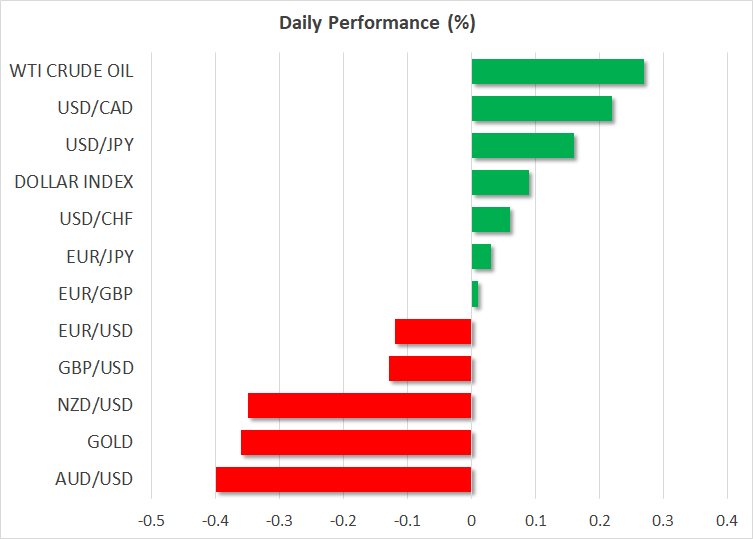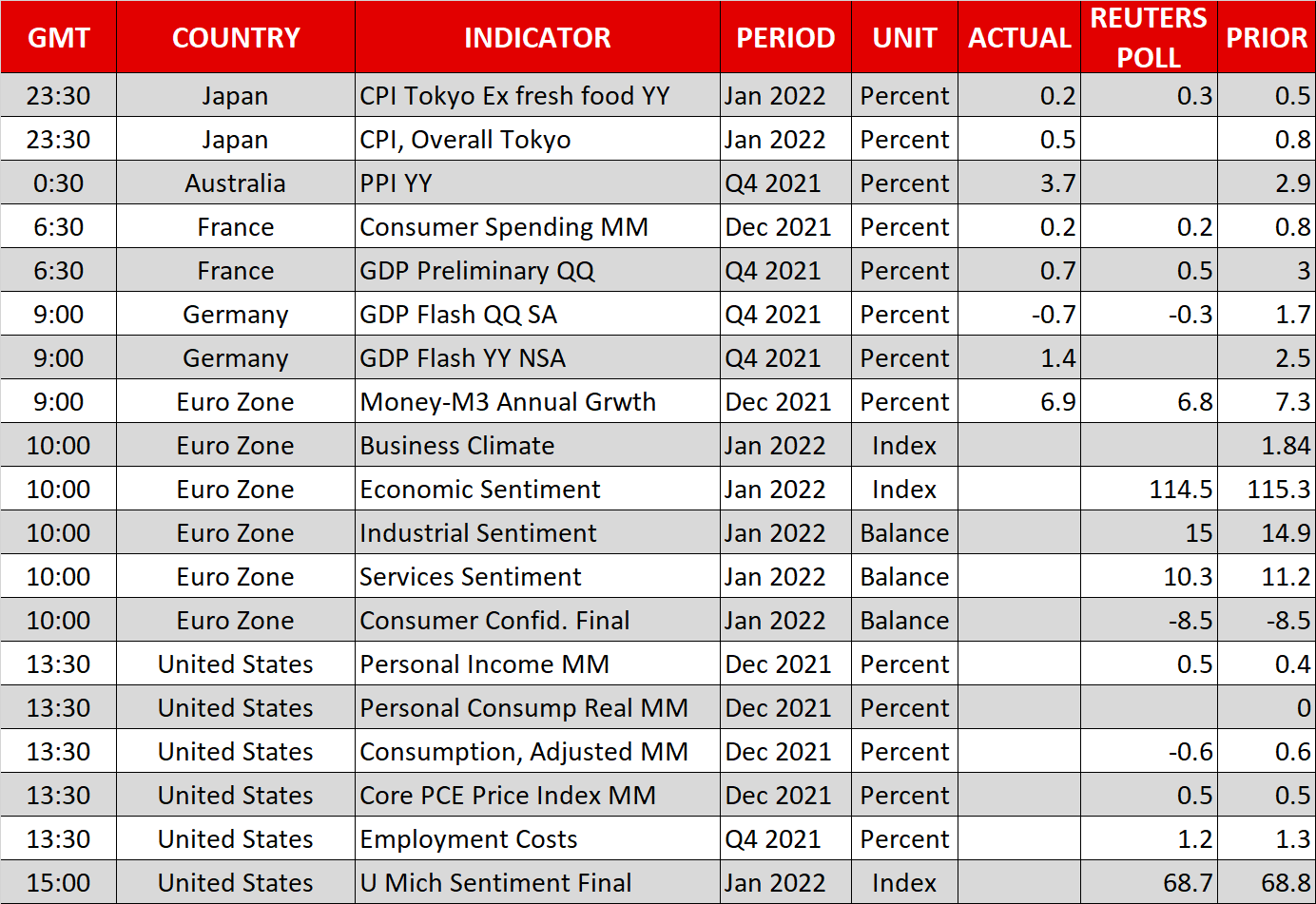- US stocks swing into losses again but Apple (NASDAQ:AAPL) pulls Nasdaq futures higher
- Fed fears continue to weigh on markets, dollar edges up to fresh highs
- Euro, aussie, kiwi lead FX losses, gold breaches $1,800/oz, but oil holds firm

Stocks remain on slippery slope
Wall Street’s latest attempt to bounce back from the January slump faltered again on Thursday, with all three main indices giving up earlier gains to slip into the red. Worries about persistent supply disruptions and rising costs, as well as tightening financial conditions are overwhelming equity traders as they no longer have the ‘Fed put’ to fall back on.
The S&P 500 closed 0.5% lower and the Nasdaq Composite lost 1.4% as high inflation and supply-chain problems have become the dominant theme in the latest earnings season. Although corporate America remains in good financial health, the growing challenges facing businesses are weighing on the outlook, as demonstrated by Tesla (NASDAQ:TSLA).
The electric vehicle maker posted strong Q4 results, but investors were unimpressed with its roadmap for 2022, as the company warned that component shortages could hit production. Tesla shares plummeted by more than 11%, dragging down other tech and EV stocks with it. But Apple appears to be doing a better job of navigating through the supply-chain chaos, posting record revenue for the quarter. Its stock is surging in pre-market trading, lifting Nasdaq and S&P 500 futures.
However, stocks globally were still feeling the pressure. China’s benchmark CSI 300 index has entered a bear market ahead of the long Lunar New Year break coming up next week and European indices were a sea of red at the open.
Today’s earnings highlight will come from Caterpillar (NYSE:CAT) and Chevron (NYSE:CVX).
Fed-fuelled dollar rally powers ahead
In the currency markets, the US dollar maintained its upswing. The dollar index is on track to finish the week with gains of more than 2%, boosted by a rally in the two-year Treasury yield following the Fed’s very hawkish policy meeting. The US economy grew at a rip-roaring rate of 6.9% in the final quarter of 2021, underscoring Fed Chair Powell’s confidence that the labour market can withstand rate increases.
Powell has messaged several rate hikes are on the way as of March, with Fed fund futures going into overdrive to price in a steeper rate path.
But other central banks will likely follow the Fed in aggressively pushing up borrowing costs so it is somewhat puzzling why the dollar has come out on top quite so strongly.
Euro, commodity dollars extend losses
The euro has plunged below $1.12, brushing fresh 20-month lows on Friday. Upbeat GDP numbers out of France today contrasted sharply with a bigger-than-expected contraction of the German economy in Q4. This poses a possible dilemma for the European Central Bank when it meets next week as it tries to strike a policy balance for all Eurozone members amid soaring price pressures.
However, the euro’s slide has slowed today, with sterling’s decline easing too. But the commodity-linked currencies are facing another bruising day. The New Zealand dollar has sunk to 15-month lows, the aussie is testing the $0.70 level, while the Canadian dollar is heading for weekly losses of about 1.5%.
Gold sinks but oil unscathed from latest turmoil
The resurgent dollar has also pummelled gold, which has crashed below the key $1,800/oz level. With geopolitical risks somewhat disappearing into the background for now, it’s just dollar moves driving the price action in gold at the moment.
However, ongoing worries about supply are supporting oil prices. The rally in crude oil has stayed intact during the recent market turbulence, though there could be some caution ahead of next week’s OPEC meeting.
Brent crude was last hovering around $90 a barrel on Friday, while WTI futures climbed back above $87 a barrel.
